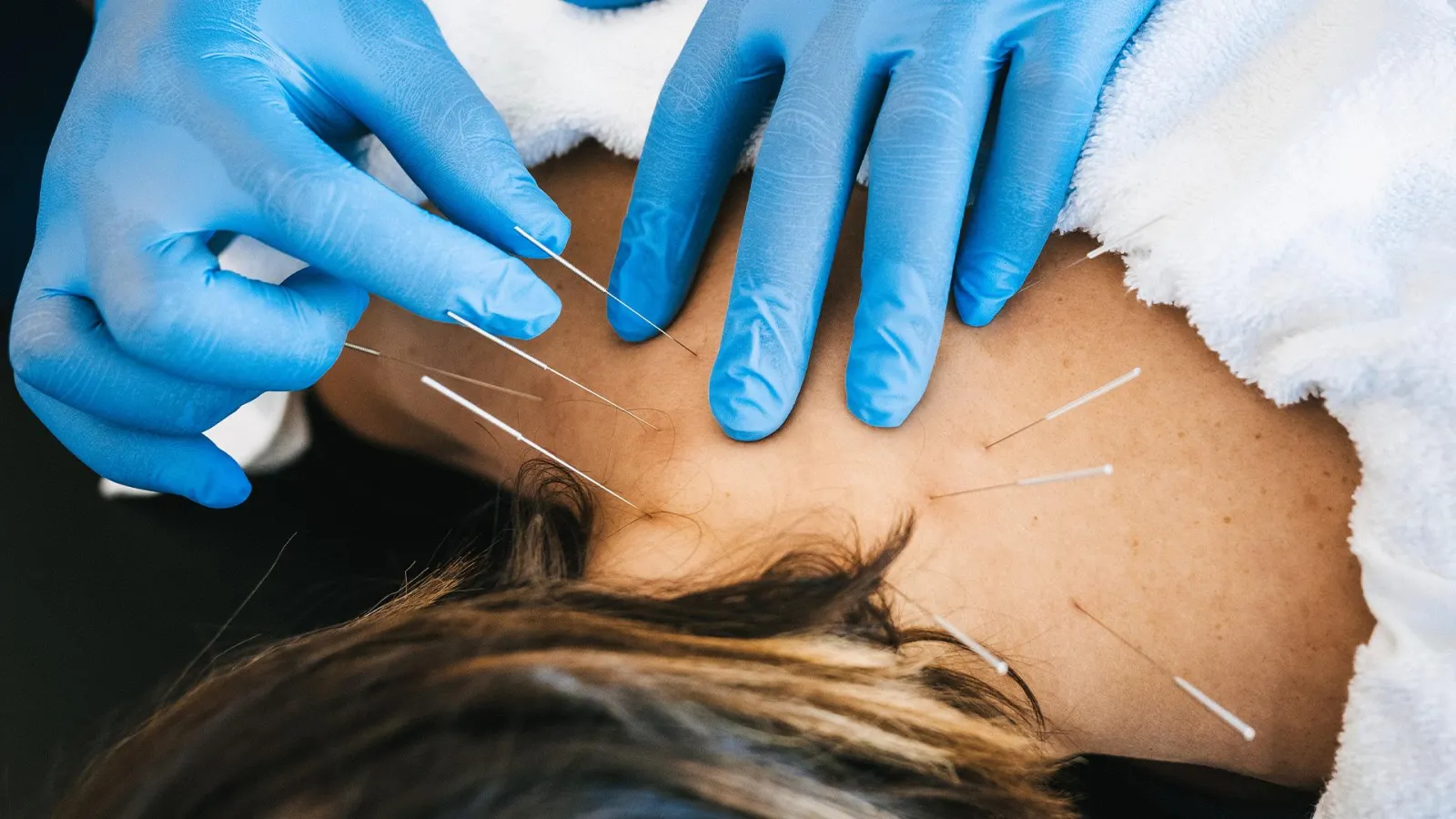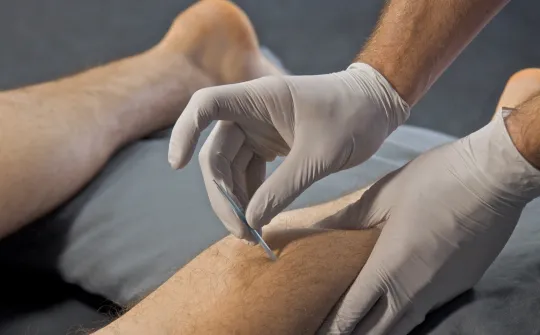
Dry Needling
Experience the Benefits of Dry Needling at Orthopaedic Specialists of Austin
At Orthopaedic Specialists of Austin, we understand that physical therapy plays a crucial role in your journey towards recovery and optimal musculoskeletal health. That's why we are excited to offer dry needling as a highly effective treatment option. Dry needling is a specialized technique performed by our skilled therapists, aimed at targeting trigger points within your muscles to alleviate pain and improve function. By inserting a thin needle into these trigger points, we can release tension, reduce muscle tightness, and promote healing. This evidence-based procedure can complement your physical therapy sessions, helping you achieve faster and longer-lasting results. Our team is dedicated to providing you with the highest standard of care, and we are confident that dry needling can be a valuable addition to your personalized treatment plan. Experience the benefits of this innovative technique at Orthopaedic Specialists of Austin and take a step closer to a pain-free, active lifestyle.

DRY NEEDLING
FAQS
What Is Dry Needling?
Dry Needling is an invasive procedure in which a solid filament needle is inserted into the skin and muscle directly at a Myofascial trigger point. Physical therapists at Orthopaedic Specialists of Austin utilize trigger point dry needling in the treatment of Myofascial pain. A Myofascial trigger point consists of multiple contraction knots, which are related to the production and maintenance of the pain cycle.
How Does Dry Needling Work?
The exact mechanisms of trigger point dry needling are unknown. There are mechanical and biochemical effects. Based on the pioneering studies by Dr. Jay Shah and colleagues at the National Institute of Health, we know that inserting a needle into trigger points can cause favorable biochemical changes, which assist in reducing pain. It is essential to elicit the so-called local twitch responses, which are spinal cord reflexes. Getting local twitch responses with trigger point dry needling is the first step in breaking the pain cycle.
Is Dry Needling Similar to Acupuncture?
There are many similarities and differences between trigger point dry needling and acupuncture. Licensed physical therapists in a growing number of states can use trigger point dry needling under the scope of their practice. Physical therapists at Orthopaedic Specialists of Austin are not licensed acupuncturists and do not practice acupuncture. In contrast to most schools of acupuncture, trigger point dry needling is strictly based on Western medicine principles and research.
What Type of Problems Can Be Treated With Dry Needling?
Dry needling can be used for a variety of musculoskeletal problems. Muscles are thought to be a primary contributing factor to the symptoms. Such conditions include, but are not limited to neck, back, and shoulder pain, arm pain (tennis elbow, carpal tunnel, golfer's elbow), headache to include migraines and tension-type headaches, jaw pain, buttock pain and leg pain (sciatica, hamstring strains, calf tightness/spasms). The treatment of muscles has the greatest effect on reducing the pain mechanisms in the nervous system.
Is the Dry Needling Procedure Painful?
Most patients do not feel the insertion of the needle. The local twitch response elicits a very brief (less than a second) response. Some patients describe this as a little electric shock; others feel it more like a cramping sensation. Again, the therapeutic response occurs with the elicitation of local twitch responses and that is a good and desirable reaction.
Are the Needles Sterile?
Yes, Orthopaedic Specialists of Austin only uses sterile needles.
What Side Effects Can I Expect After the Treatment?
Most patients report being sore after the procedure. The soreness is described as muscle soreness over the area treated and into the areas of referred symptoms. Typically, the soreness lasts between a few hours and two days.
What Should I Do After Having the Procedure Done?
Our recommendations vary depending on the amount of soreness you have and on the individual response to the treatment. Recommendations may include applying heat or ice over the area, gentle stretches and modifications of activities.
How Long Does It Take For the Procedure to Work?
Typically, it takes several visits for a positive reaction to take place. We are trying to cause mechanical and biochemical changes without any pharmacological means. Therefore, we are looking for a cumulative response to achieve a certain threshold after which the pain cycle is disturbed.
Where Does Dry Needling Fit Into the Rehabilitation Program?
Generally speaking, trigger point dry needling is the modality of choice when it comes to treating patients in the clinic. More frequently, trigger point dry needling is needed in the beginning in order to break the pain cycle. Once that is achieved, other treatment options are introduced.